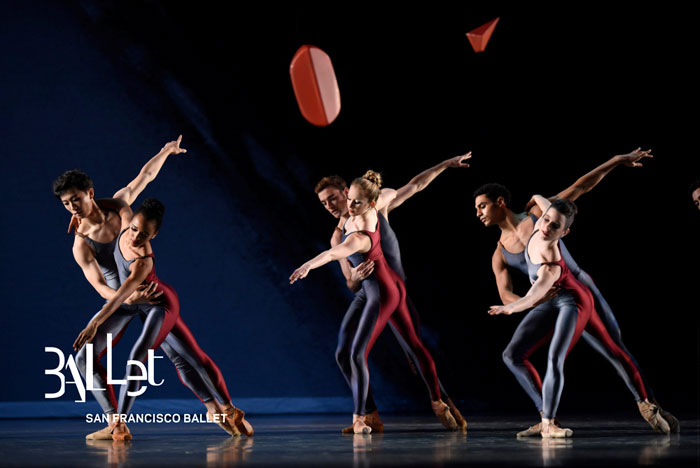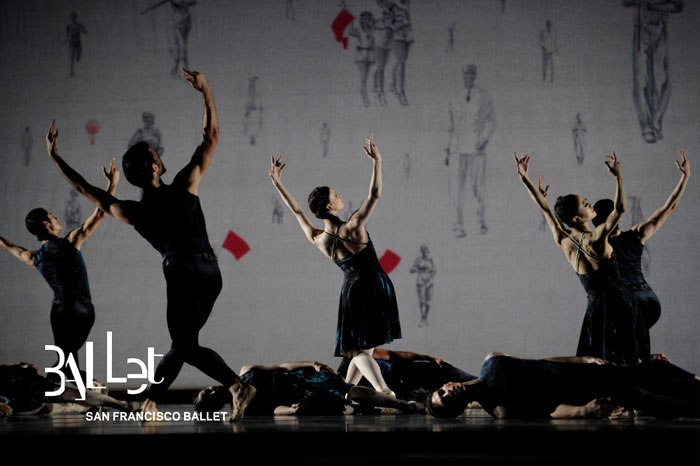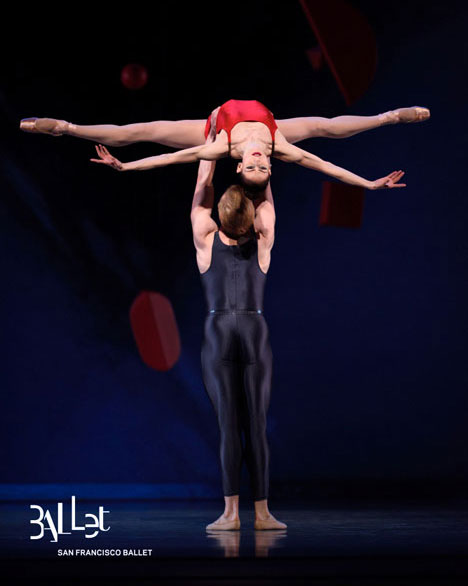
Lovers of ballet in San Francisco have enjoyed an interesting and exciting season from San Francisco Ballet this year, with works as diverse as Don Quixote, The Sleeping Beauty, The Little Mermaid, world premieres of ballets by Liam Scarlett and Yuri Possokhov, and a selection of some of the works so successfully premiered in the Company’s 2018 Unbound: A Festival of New Works.
The Season draws to a dramatic close this month with Alexei Ratmansky’s fabulous and highly successful Shostakovich Trilogy – a work which earned the choreographer his second Prix Benois de la Danse in 2014, and the work which will open San Francisco Ballet’s London season at Sadler’s Wells at the end of May.
Co-commissioned by American Ballet Theatre and San Francisco Ballet, the first part of Shostakovich Trilogy was premiered by American Ballet Theatre in 2012, the second and third parts in 2013 – the year in which Ratmansky was the recipient of a MacArthur Foundation ‘genius’ award. The work in its entirety was first seen at the War Memorial Opera House in San Francisco the following year.
As Ratmansky’s tribute to the music of Shostakovich – which has long held a fascination for him – the ballet is set to three of the composer’s full-length works – Symphony #9, Chamber Symphony and Piano Concerto #1 – each reflecting a different phase of the composer’s life during the tumultuous years of the Stalinist era.

The Symphony # 9 was written at the end of the Second World War. It was supposed to be a grand triumphal work, celebrating the defeat of the Nazis, instead of which Shostakovich – in one of his acts of rebellion – produced what conductor Phillip Lenberg described as “a critical mirror held up to Stalin’s Russia”, which he used as a voice for the Jewish people persecuted in the Soviet Union under Stalin’s tyrannical regime.
Created for 21 dancers, the work features five principal characters – two lead couples and a solo male dancer. The first couple represents Shostakovich and his wife, supporting each other in a time of great personal danger, when he was in constant fear of arrest, the other couple heading the corps de ballet which represents the Soviet regime. The ballet, however, is not devoid of hope, which comes in the form of a dancer whom Ratmansky calls the Angel, who shows that a way through the turmoil can be found.

The Chamber Symphony – an arrangement of Shostakovich’s 1960 String Quartet No 8, Op 110, by conductor Rudolf Barshai – provides the score for the second ballet, a work which is known to have been deeply personal to the composer. It carries the dedication ‘In Memory of Victims of Fascism and War’, however it’s also considered by some to be autobiographical, conveying a deep feeling of loss. Ratmansky addresses this perception with his portrayal of the composer and the three loves in his life – the girl with whom he was infatuated, but for whom he never made time; his wife, the mother of his children, whose death affected him badly’; and the young wife with whom he spent his later years.

Piano Concerto #1 is regarded as the most abstract ballet of the three. The concerto is delightfully quixotic, with rapid mood changes, from the bright and sparky to beautiful passages of a more serious nature. Shostakovich apparently refused to make any comment on the ‘inner meaning’ of the work, the only indication of his thought process having been an article published in Sovetskaye Iskussto in December 1933, in which he was quoted as saying: “I am a Soviet composer. Our age, as I perceive it, is heroic, spirited and joyful. This is what I wanted to convey in my concerto. It is for the audience, and possibly the music critics, to judge whether or not I succeeded.”
Staged by Nancy Raffa, Shostakovich Trilogy has scenic design by George Tsypin, costumes by Keso Dekker and lighting by Jennifer Tipton.
San Francisco Ballet presents Shostakovich Trilogy at the War Memorial Opera House from May 7th to 12th. The San Francisco Ballet Orchestra will be led by the Company’s Music Director and Principal Conductor, Martin West. More information on this ballet can be found in the program notes, and information on tickets can be found on this page of the San Francisco Ballet website.
Information sourced from:
San Francisco Ballet program notes
Shostakovich Symphony No 9
Shostakovich Chamber Symphony
Shostakovich Piano Concerto No 1
All photographs © Erik Tomasson
